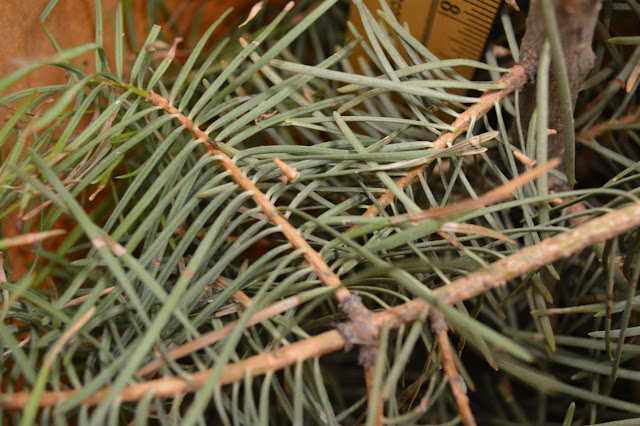(By U of I Plant Clinic Student Worker, Sean Mullahy)
These infamous garden pests come in two patterns, spotted
and striped, and are fantastic at destroying all things cucurbit. So beware
their interesting fashion sensibilities, and protect your garden against these
nasty little pests.
The first step to keeping them under control is proper
identification. The spotted beetle is about ¼ inch in length and has yellowish
green forewings with twelve distinct black spots. The striped cucumber beetles
are nearly the same in size, also averaging about ¼ inch in length. These have
much simpler fashion sensibilities, with two distinct black stripes running
down each of their wing covers. The innermost stripe on each matches up with
the one on its partner wing, making it appear as though they only have three
black stripes. It can also be easy to confuse the striped cucumber beetle with
the western corn rootworm. They have similar color and patterns, but the
western corn rootworm has a yellow abdomen, and the striped cucumber beetle has
a black abdomen. The larvae for both are striped, but spotted cucumber beetle larvae are whitish –
yellow in color. Cucumber beetle larvae are much bigger than their adult stage, ranging from ½ to
¾ inches in length, and they have dark brown heads and three pairs of very short
legs.
 | ||||||||||||||||||||||||||
| Adult southern corn rootworm (a.k.a. spotted cucumber beetle), Diabrotica undecimpunctata howardi (R.L. Croissant, Bugwood.org). |
 |
| Striped cucumber beetle (Whitney Cranshaw, Colorado State University, Bugwood.org) |
 |
| Striped cucumber beetle (David Cappaert, Michigan State University, Bugwood.org) |
 |
| Western corn rootworm beetle (Whitney Cranshaw, Colorado State University, Bugwood.org) |
As for life cycle, both spotted and striped cucumber beetles
overwinter as adults. The striped beetle is the only one that will be a big
issue in early spring however, the spotted beetle has a much lower success
rate in surviving the Illinois winter. It, however, can be a bigger problem in
southern Illinois. Once active, they begin feeding, and
can survive off the pollen and petals of many different plant species before
cucurbits are planted or growing. Once the cucurbits are actively growing, they
move onto these, with the ability to feed on foliage and fruits and truly
devastating anything they can munch. These adults eventually lay eggs at the
base of their hosts, and once hatched, the larvae will feed on the roots.
Depending on location, this cycle can be repeated up to two times per season,
with this only happening in warmer locales.
If the direct damage to your tasty melons, butternuts,
cucumbers, and all your other favorite hard shelled veggies wasn’t enough, the
cucumber beetle also spreads a number of nasty pathogens. Throughout localized
plantings, they will spread squash mosaic virus, which can be quite nasty to the
fruits. They can also spread bacterial wilt of cucurbits, which affects most of
your favorite fruit bearing cucurbits.
Management of the Cucumber Beetle can be done preemptively
with the application of a systemic insecticide to the soil at the time of
planting. This however might be a bit much for the homegrowers out there. The
only other option available is to spray a foliar insecticide when adult beetles
show up. Applications are recommended based on total adult beetle count, and if it
exceeds one per ten plants at the seedling stage, or one per plant at
flowering. If you’d like to practice
non-chemical control of this pest, the easiest thing to do is dress your plants
in a mesh cloth to keep the pests out. The earlier the better for this method,
and make sure the mesh is open enough to let in ample sunlight, while also
being tight enough to keep the pests out.
Further Reading:



